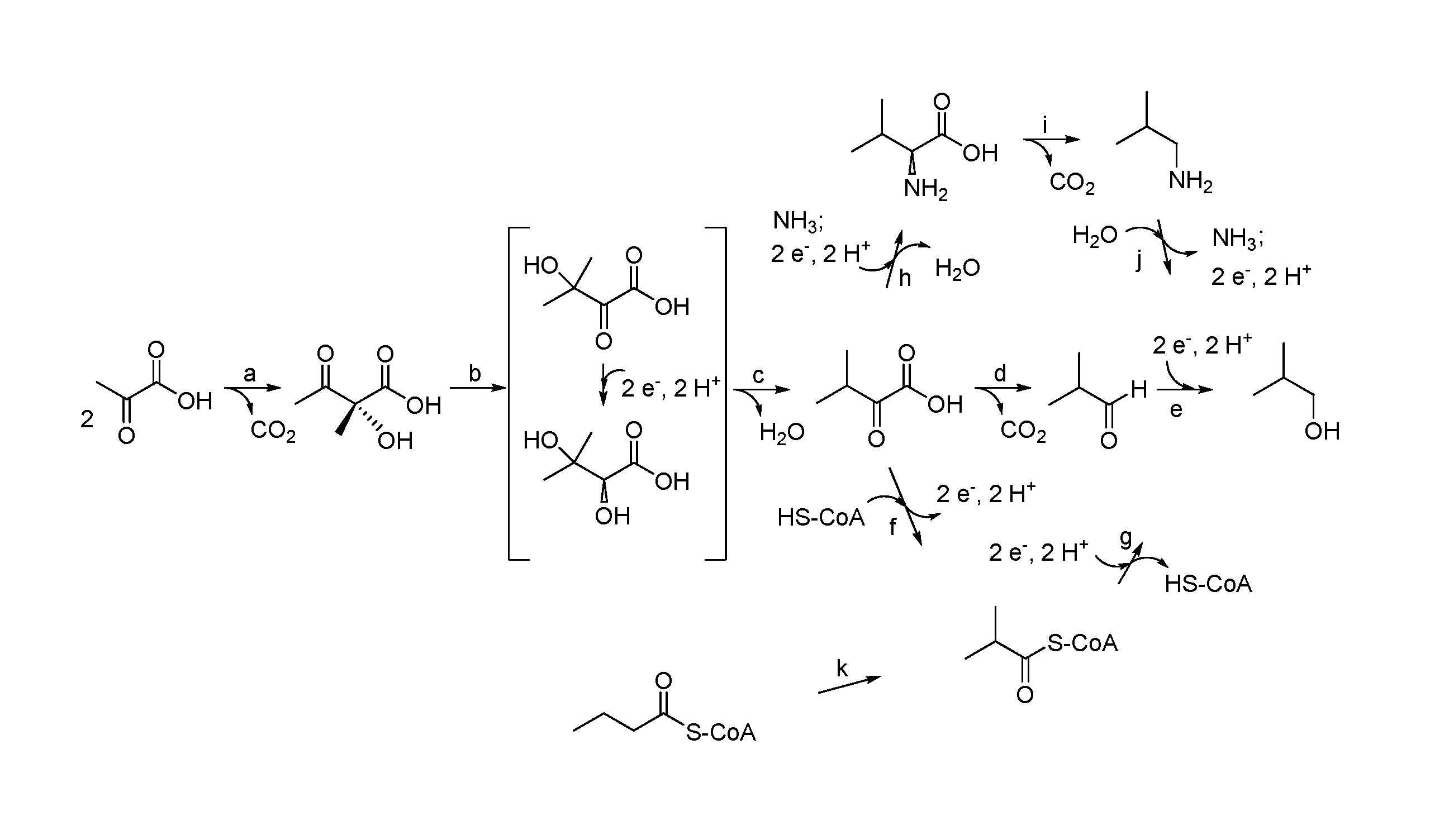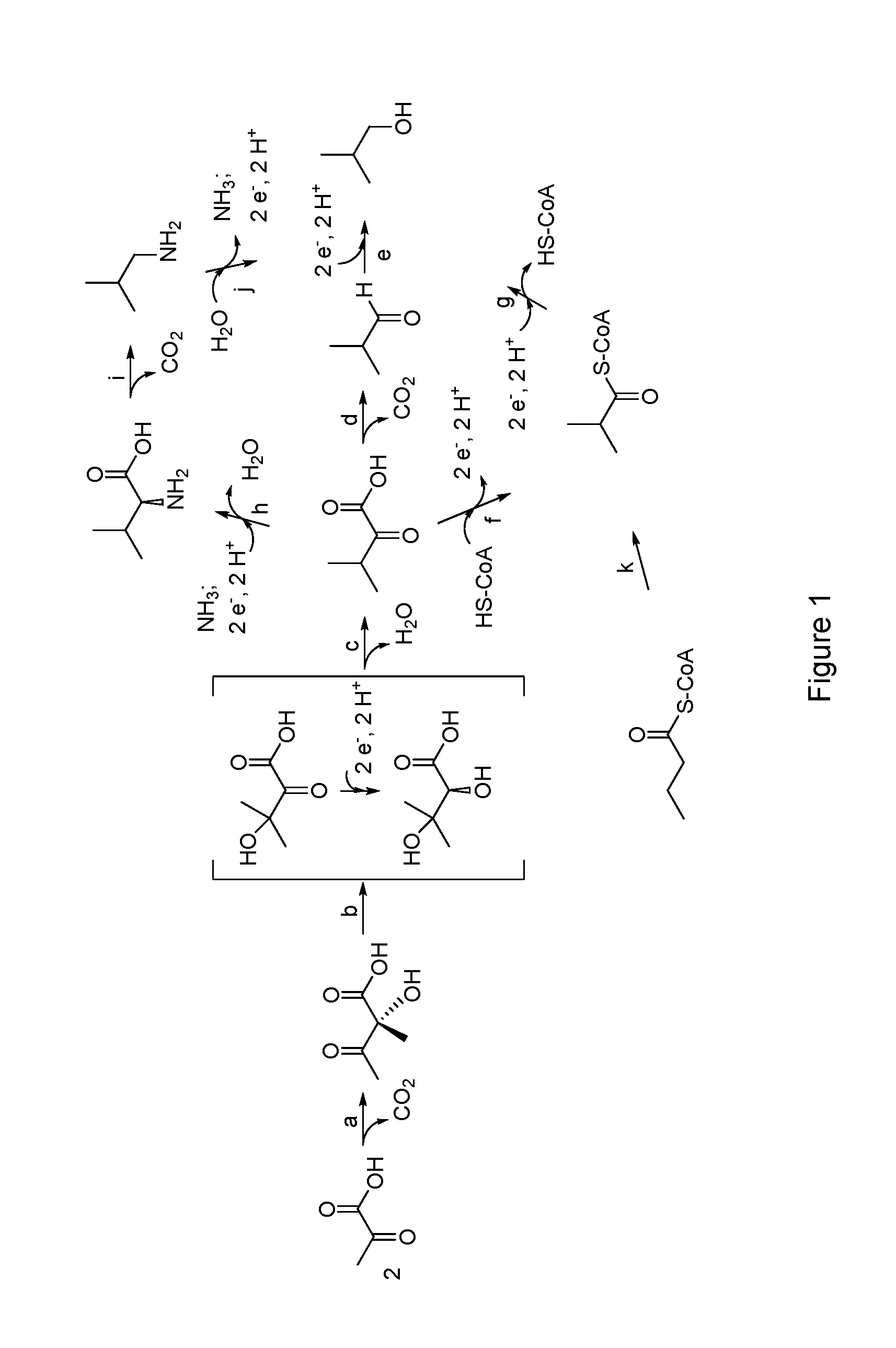Isobutanol tolerance in yeast with an altered lipid profile
- Summary
- Abstract
- Description
- Claims
- Application Information
AI Technical Summary
Benefits of technology
Problems solved by technology
Method used
Image
Examples
example 1
Cloning Heterologous Fatty Acid Desaturases into a Yeast Expression Vector
[0271]The present example describes the construction of plasmids for the heterologous expression of Yarrowia lipolytica Δ9 desaturase (Yld9d; SEQ ID NO: 1), Mortierella alpina Δ9 desaturase (Mad9d; SEQ ID NO: 9), and Fusarium moniliforme Δ12 fatty acid desaturase (Fmd12d; SEQ ID NO: 2) in an isobutanologen.
[0272]The ORFs of Y. lipolytica Δ9 desaturase (SEQ ID NO: 3), M. alpina Δ9 desaturase (SEQ ID NO: 10), and F. moniliforme Δ12 fatty acid desaturase (SEQ ID NO: 4) were synthesized using S. cerevisiae codon usage by GenScript USA Inc., 860 Centennial Ave., Piscataway, N.J. 08854, USA, with NcoI and NotI restriction sites and cloned into the NcoI and NotI digested vector, pFBA1-413N (SEQ ID NO.: 75), resulting in plasmids pZ18, pZ26, and pZ12, respectively. The heterologous desaturase ORFs are expressed under the control of the S. cerevisiae fructose-biphosphate aldolase gene (EC 4.1.2.13; GenBank No.: X15003;...
example 2
Replacement of the S. cerevisiae OLE1 Gene with Heterologous Yarrowia lipolytica and Mortierella alpina Δ9 Desaturase Genes
[0277]The fatty composition of wild-type Yarrowia lipolytica (Zhang et al., Yeast (2012) 29:25-38), which has a sole Δ9 desaturase gene suggests that it has a 2.4 fold preference for 18:0 over 16:0. Therefore to further improve the level of oleic acid, the host OLE1 gene was replaced with FBA1:Yld9d gene by homologous recombination. For this, the PNY2145 strain was transformed with the OLE1Δ::Yld9d / LoxP / URA3 gene / LoxP DNA cassette (SEQ ID NO.: 77) comprised (5′ to 3′) of 51 bp of the nucleotide sequence immediately upstream of the S. cerevisiae OLE1 ORF, the FBA1 promoter, the Y. lipolytica Δ9 desaturase gene (SEQ ID NO: 3), the ADH1 terminator, loxP71 sequence, the URA3 gene, loxP66 sequence, and the 47 bp immediately downstream of the S. cerevisiae OLE1 ORF. URA3 transformants were selected on URA dropout plates and screened by PCR to identify ole1Δ mutant str...
example 3
Creation of Strains Expressing Fatty Acid Elongases
[0282]Fatty acid elongases that convert C16 fatty acids to C18 fatty acids have been identified and isolated from M. alpina (SEQ ID NO.: 16, U.S. Patent Appl. No. 2007 / 0087420, incorporated herein by reference) and Y. lipolytica (SEQ ID NO.: 15, U.S. Pat. No. 7,932,077, incorporated herein by reference). A Δ9 fatty acid elongase has also been isolated from Euglena gracilis (SEQ ID NO.: 12). To express these enzymes in S. cerevisiae, DNA fragments containing the coding region of the genes, codon optimized for expression in S. cerevisiae, were synthesized and cloned into the vector pFBA-413N (SEQ ID NO.: 13), under the control of the FBA1 promoter by Genscript. The resulting plasmids were named pZ14 (M. alpina), pZ16 (Y. lipolytica) and pZ10 (E. gracilis).
[0283]0.5 μg of pZ10, together with 0.5 μg of plasmid pLH804::L2V4 (SEQ ID NO.: 76), which comprises the K9JB4P variant of Anaerostipes caccae ILVC under the control of S. cerevisiae...
PUM
| Property | Measurement | Unit |
|---|---|---|
| Fraction | aaaaa | aaaaa |
| Composition | aaaaa | aaaaa |
| Electrical resistance | aaaaa | aaaaa |
Abstract
Description
Claims
Application Information
 Login to View More
Login to View More - R&D
- Intellectual Property
- Life Sciences
- Materials
- Tech Scout
- Unparalleled Data Quality
- Higher Quality Content
- 60% Fewer Hallucinations
Browse by: Latest US Patents, China's latest patents, Technical Efficacy Thesaurus, Application Domain, Technology Topic, Popular Technical Reports.
© 2025 PatSnap. All rights reserved.Legal|Privacy policy|Modern Slavery Act Transparency Statement|Sitemap|About US| Contact US: help@patsnap.com


